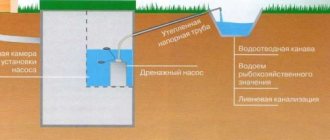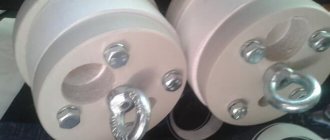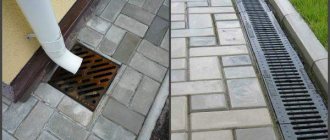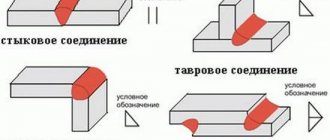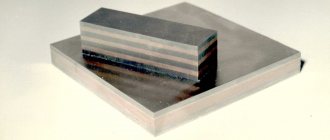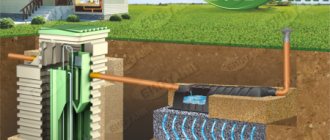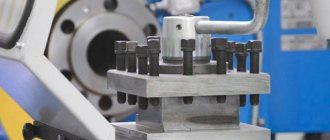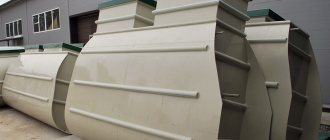Every year the production of plastic goods increases. It is no longer possible to imagine modern life without plastic bottles, plastic disposable tableware, cans, plastic bags, stoppers, tape, trays, pallets, etc.
Plastic products are lightweight, economical, and convenient in everyday life. Due to the increase in production, the amount of plastic waste that pollutes the environment is also increasing.
This waste poisons the environment, since plastic practically does not decompose, and when burned it releases toxic substances. In this regard, the issue of recycling plastic waste is urgent.
Types of plastic crushers by purpose
To recycle polymer raw materials or give them a second life, they must first be crushed. For different types of polymer waste, certain crusher models are used.
- Film waste - to process such waste, units equipped with V-shaped knives are used, which shred the film like scissors. The blades of the scissors are very sharp. Such machines process products made of polyethylene, nylon, and acrylic.
- Plastic bottles or other thin-walled products - in this case, the plastic shredder must be equipped with cascade cutters. Maximum productivity can be achieved with high equipment load.
- Large pieces of plastic, fragments of instruments, thick-walled products - such waste is crushed by crushers with powerful knives. If the knives become dull during use, they can be sharpened, which in turn reduces the cost of the recycling process.
Manufacturing process
After all the materials and tools for creating the structure have been purchased, you can make a plastic crusher with your own hands.
Creating a cutting block
Install disc cutters on the metal support. The elements must match in size, the distance between homemade knives is kept to a minimum. Metal washers will help with this. Secure the saw blades of the homemade crusher with nuts along the edges. Place everything on the pulley and use two bearings. This way the unit can spin.
Welding the support frame
You need to make a rectangular frame with your own hands. This can be done by taking a metal corner, a pipe, or a profile. Next, use a welding machine to give the desired look. Weld legs of the required size to the resulting element.
Cover the frame with a metal sheet and weld it to the frame. On the surface of the sheet, cut a hole identical in size to the cutting block. Attach the motor close to the blades of the device.
Assembly
Now all that remains is to assemble the crusher device. Before putting a protective shell on the cutters, you need to make sure that there is space in the latter for the axle to engage the pulley. Attach a hopper for plastic raw materials in the upper part. Connect the cutting block of the crusher to the motor with a special belt.
Designs of crushing equipment for plastics
As well as by purpose, crushing apparatus can be divided according to design:
- Impact crushers for plastic are the most popular plastic shredder.
- Jaw shredders - in them, waste is disposed of by applying pressure on them with corrugated steel plates. Cheek appliances are very reliable in operation.
- Cone crushers - in which plastic products are passed between two moving metal cones, the waste is ground as if on a grater.
- Hammer crushers - these devices use the impact principle. Crushing is organized using special hammers, hinged on the rotor.
- Universal crushing equipment is a complex apparatus consisting of several types of crushers, each of which processes a specific type of polymer raw material.
Initial data for design
It is better to start production with a clear definition of the tasks of the shredder, that is, you need to know the type and quantity of raw materials being processed, and the size of the output fraction.
After this, we find a model from any well-known manufacturer that fits these parameters and
take its technical characteristics :
- engine power;
- loading window dimensions;
- number and diameter of rotors;
- knife configuration.
Characteristics and design of crushers
Impact crushers
The main part of an impact crusher is the knives. The number of knives depends on the rotor speed.
The main indicators of a rotary shredder are:
- Engine power.
- Rotor diameter.
- The number and quality of knives on the rotor and on the bed (knife blades should be made of good steel for strength and durability).
- Rotor speed. Crushers with a high rotation speed process thin-walled materials, while low-speed crushers process thick-walled materials.
- Bin size for loading raw materials.
- Diameter of grille holes.
- Dimensions, weight.
The raw materials are loaded into a special hopper, and the plastic is crushed between moving and static groups of knives. The crushed waste is sifted through a metal sieve. The process continues in cycles until the last batch of material passes through the sieve. The size of the crushed raw materials depends on the specific crusher model.
The productivity of such devices reaches several hundred kilograms per hour, and energy consumption is low.
The resource is quite short-lived. Crushers come in single-rotor and double-rotor types. Some models have a grate that acts as a hammer chopper.
Jaw crushers
Here two steel corrugated surfaces are used. One is located vertically, and the other, the so-called “cheek,” is located at an angle, making rotational movements due to which the material is crushed.
The main characteristics of the jaw crusher are:
- Engine power.
- Cheek rotation speed.
- The size of the resulting fragments.
- Dimensions, weight.
The productivity of jaw crushers is lower than that of rotary crushers, but they are more reliable.
In general, the principle of operation of all crushing devices is similar - to destroy the feedstock mechanically.
Watch a video about the company
The equipment is designed for crushing plastics of different densities. The characteristics of each plastic influence the cost and design, in particular the cutting parts of crushers. Shredders must fit each material in such a way that it does not wrap around the parts - if it is a stretchable polymer, does not bounce off the knives - if hollow containers are crushed on the machine and does not damage the knives - when crushing solid plastic waste, for example, sprues.
The division of crushers is, of course, conditional and basically all types of cutters can cope with one or another raw material, not even of polymer origin, with the exception of substances that are too hard - metals, rocks, etc. In order to increase the efficiency of crushing, some grinders have the ability to adjust the gap between the cutters; such equipment can be called universal. To select and purchase the optimal grinder for your material in terms of price and quality, you can consult with our managers. All crushers are sold directly from manufacturers at the best price.
In most cases, it is also possible to connect peripheral devices to the shredders to automate processes, which can also be purchased from us. For example, for supplying plastic for processing or unloading finished crushed material. Such additions speed up the work process, allow you to save on labor, since the cost is recouped during the production process, and increase production volume, since all equipment continuously produces a single amount of processed polymer, which cannot be achieved using labor. A number of shredders initially have a built-in auger for dispensing recycled plastic; when water is supplied to the unit, pre-washing of the plastic will be ensured before it is transferred to the next stage.
When choosing a crusher, they usually focus on the features listed below.
1.Types of crusher knives
Plastic waste is a tricky material to recycle, as it is often mixed in density and requires preliminary sorting. For efficient processing, plastic crushers are selected based on their working elements.
- Cascade - knives that look more like square parts. Several pieces are installed in a row in the form of a ladder, so that each subsequent blade is one step behind the previous one. If there are a large number of knives in the crusher, they are placed ascending to the middle and descending from it. Most often they are sharpened on both sides, this allows additional savings on spare parts in case of wear. Each of the parts is attached separately to the rotor with its own fasteners, so it is enough to disassemble them and turn them over. Arrangement in this order allows you to capture a large volume of recyclable plastic with a smooth impact on it. Even at high rotation speeds, the material will gradually degrade depending on the order of the cutters installed. The total number of working elements in the crusher can reach 50 pieces, including stationary ones. Crushers - XFS, SWP, PZO - are equipped with a similar arrangement of blades.
- Dovetail - consists of two short blades installed in a V shape. This shape allows you to grab film materials or hard thin-walled plastic containers, acting on them like scissors. Smoothly cuts polymer raw materials so that they do not bounce when impacted, even at high rotor speeds. The number of knives of this type in the design of crushers is usually limited to 6 pieces, placed in 3 rows (2 knives placed in a V shape per row). The total number of cutting parts in the crusher may be greater; stationary blades are installed inside the housing. These cutters are equipped with shredder models - SWP, PZO, DSNL, IPR.
- A bevel cut is a one-piece cutter positioned at a slight angle. It has the same advantage as the previous blade shape - it provides smooth cutting of plastic like scissors. Mainly works with soft polymers - film, burlap, big bags. Another variation of this form is a spaced oblique cut - two knives on the same line are located at the same angle of inclination. In addition, one protrudes a little further than the other. The total number of knives varies from 5 to 10 pieces. Crushers equipped with an oblique or spaced oblique cut - PZO, SWP, DSG, DSNL.
- Direct arrangement - one-piece blade, installed parallel to the rotor. It does not have any special advantages compared to other types of knives, with the exception of one thing - it copes well with molded materials. This type of working element breaks the plastic with sharp blows, simultaneously pulling it inside the grinding hopper. This feature also affects the design of the crusher - the body is made of an elongated shape so that a long polymer product can easily fit inside and not fall out. Crushers with similar knives are DSNP and DSPN.
2.Crusher performance
Considering this parameter, you can buy a chopper according to the required production volume, this is especially important if the equipment is used in a line. This approach will allow the required amount of plastic to be processed evenly and not cause delays in the entire production chain due to one machine.
The performance of the shredder is also important when processing specific plastics. For example, on the same machine, when crushing hard plastic, the volume of processed material reaches up to 300 kilograms per hour, and when processing film polymers, it can drop to 100 - 150 kilograms per hour.
For economic purposes, two more parameters are also taken into account - power consumption and crusher dimensions. The first point is taken into account in order to save electricity costs. The second point is taken into account for placement on the territory of the enterprise.
Operating principle of shredders
For the most part, plastic crushers operate the same way, with a few exceptions.
The polymer is fed into the receiving window - throat. On larger equipment, the size is large enough to accommodate large volumes of material at once or large pieces of plastic. Inside the housing, the material falls directly onto the rotating rotor, on which the knives are mounted. It can rotate both towards the pharynx and towards the rear wall. The advantage of the latter is that the shredded pieces of plastic are not thrown back out of the crusher. The rotor itself is driven by an electric motor, to which it is connected by a belt. During rapid rotation, an impact occurs; if the polymer is hard, it breaks into crumbs; if it is soft, it breaks into pieces. In addition to the main parts on the rotor, destruction is also facilitated by stationary cutters installed on the crusher body in such a way that there is a small gap for plastics and promotes faster grinding.
To obtain a uniform crushed fraction, the listed methods of influence are not enough. To ensure that large pieces undergo repeated grinding, a fractional mesh is installed in the lower part of the machine body. A sieve with a certain caliber of cells prevents large residues from falling out, and only allows those particles that will pass into the cells to pass through. In most cases, the part can be replaced, this allows the same crusher to be used for different types of plastic waste. Each plastic has its own required fraction size for further processing. For example, crushing of film polymers reaches up to 40 mm, and hard thin-walled plastics up to 14 mm.
Recycled plastic is discharged through an unloading hopper (if there is no built-in auger) into a basket, the latter often included with the crusher. When connecting peripheral equipment, it is possible to pour it directly into a bag or big bag. The operation of some machines is controlled by a control cabinet.
Criteria for selecting crushing devices
The main criteria for selecting crushing equipment are reliability and performance. But often devices that have high performance do not have high reliability, and vice versa. In this regard, large industries use several types of crushers.
To process window frames, a machine capable of processing large pieces, such as a jaw crusher, is first used. To obtain smaller fragments, another apparatus is used. The film will be crushed unsuccessfully; it must be cut.
If you take an impact crusher, then special attention should be paid to the knives as the main part. The blades must be sharpened, and if there is a need to change them, this can be done without completely disassembling the entire unit.
After all, the costs of expensive maintenance or downtime due to complex repairs can result in serious economic damage.
The main manufacturer of crushing machines is China; similar equipment is also produced in Europe and Russia. The most famous brands are Genox, Enma, Zerma, Jwell, Huare, Wensui, AtlasMash.
Where can I get the drawings?
You need to understand that manufacturers of equipment for shredders and crushers will not make drawings publicly available .
The easiest way to get diagrams for a homemade shredder or crusher is in two ways:
- Read forums on the topic , like this one. The likelihood of finding accurate and detailed drawings of plastic shredders is very low. Often, resource users recycle some unclaimed equipment from a related industry, for example, a lopper. And if a crusher is made from scratch, few people care about documenting all stages of production. Nevertheless, it’s worth reading the forums: analyzing discussions and other people’s design mistakes will help you make a more advanced plastic shredder with your own hands.
- Take measurements from the existing shredder. It will not be possible to obtain complete information, since the owner will not allow you to disassemble a working machine. But even a visual assessment will help in making your own homemade crusher.
Many attempts to make a crusher on their own reach a dead end due to the fact that the designer tries to attach to an existing unit . For example, “fit” all the elements to a worm gearbox found in the garage.
An attempt to reduce the cost of a design using secondary parts, as a rule, leads to mistakes.
Installation and connection of crushing equipment
Most crushing machines are supplied disassembled. Therefore, specialists are required to assemble the equipment, otherwise there is a high probability that the equipment will be damaged, or it may fail ahead of time.
The surface on which the equipment is installed must be perfectly flat, as this affects the quality of operation of the crushing apparatus.
Complex equipment requires connection to a PC, installation of special software, and additional grounding.
Materials and tools for manufacturing
To assemble a plastic shredder with your own hands, you will need knowledge in the field of welding, as well as patience. A welding unit would be useful. Homemade plastic crushers consist of the following parts:
- Elements for fastening (self-tapping screws for metal, washers, nuts).
- The metal axis on which the saws of the unit are mounted.
- Circular saws. It is better to choose about 20 cutters for deep crushing of plastic. The correct configuration of teeth and their optimal number will allow the unit to grind more efficiently.
- A pulley, 2 bearings and a belt that combines the work of the electric motor and rotor in the crusher.
- Drive unit. There are different types of devices available for sale. The electric motor of the unit can be used indoors and outdoors.
- A metal pipe or profile for the axial frame and frame.
- Plastic raw material supply container, protective casing. You can make them yourself from galvanized sheets using metal scissors, a vice and a hammer.
Operating conditions of crushing devices
- Ideally flat surface for installing crushing devices.
- Carry out equipment maintenance in a timely manner. For example, sharpen cutting blades on time, change knives, etc.
- Only process materials for which this equipment is intended. The plastic crusher is designed to crush plastic only, not wood, stone or metal. A plastic bottle crusher cannot be used as a plastic film shredder.
Types of Shredders
There are 3 types of such devices, which can be divided according to the capabilities of processing all the material. They are divided into the following options:
- the design’s appearance resembles unusual blades on scissors; it is suitable for working with types of plastic such as acrylic, film and nylon;
- the type that is most often used in factories where plastic is made, as well as in plants for processing old material;
- hammer, cone or jaw devices, which are used for processing large plastic parts, for example, window profiles.
Recommendations from experts
The main advice that the craftsmen give is the need to make a drawing before starting work in order to know exactly what the structure you are planning will look like. This will help avoid inaccuracies and errors with the dimensions of individual parts .
Having planned and assembled such a device with your own hands, you can, knowing its design, calmly make changes and improve it. The processed plastic will have a size that is included in the design capabilities of a particular device.
When choosing such a device, you need to decide in advance how often the unit will be used. If there will be little work on it, and the loads planned are small, then a low-power electric motor will suffice, but for active use you will need a more powerful device with a huge number of revolutions.
And in order to avoid the need to collect processed fractional material from the floor, it is worthwhile to provide an angle under the saws for securing a strong container.
Description of this kind of recycling machine
Crushers are units designed for crushing solid materials, such as rocks, minerals, glass, polymer or glass and other recyclable materials and other waste.
The main design options for such machines are detailed in GOST 14916-82 “CRUSHERS. TERMS AND DEFINITIONS". In the general classification, crushers are divided according to their operating principle. The main design options for these machines are listed below:
- rotary units;
- hammer crushers;
- jaw crushers;
- cone crushers;
- roller machines;
- centrifugal devices.
This article describes equipment for grinding plastic products, as well as materials made from thermoplastic elastomers, rubber goods, and composites.
When recycling plastics, crushers are divided into shredders and coarse (up to 100-300 mm), medium (25-100 mm) and fine (5-25 mm) crushing machines. The first class receives crushed particles measuring 100-300 mm, the second - 25-100 mm and, finally, the third - 5-25 mm. Also in production, grinders are used to obtain smaller fractions, for example, particle sizes of 2-5 mm, as well as mills. Let's take a closer look at the main types of crushing machines for plastics.
We make the crusher ourselves
Do-it-yourself rack: options and diagrams on how to quickly and easily make a high-quality rack
Owners who decide to assemble a plastic shredder themselves can find a lot of options for this useful device online and choose the most suitable one. Making this device with your own hands is not so difficult - you just need to be patient and have minimal operating skills. You can assemble a high-performance plastic processing unit without the use of special equipment. To complete the work, you only need a welding machine or a household inverter.
Tools
Each master can, at his own discretion, make changes to the diagram below, but in any case, a homemade plastic crusher will include the following required elements:
- Drive unit. Usually an electric motor is used as it. If you don’t have what you don’t need, you can go to the store and find an inexpensive model with the required power among the range offered. A crusher equipped with an electric drive is also advantageous in that it runs more quietly, so it can be used not only outdoors, but also indoors.
- Circular Saw. It will be responsible for processing plastic waste. Make sure you have a sufficient number of saws with different tooth shapes so that you can shred waste efficiently. Given the task at hand, it is ideal if you install at least 20 saws on one axis.
- A working axis designed for mounting saws.
- A metal profile that can be replaced with a pipe of a suitable diameter. The supporting frame and frame of the crusher will be made from it.
- Protective cover and feed hopper. To make them, you can use galvanized sheets. You will also need a special tool - metal scissors, a hammer and a vice.
- A pulley, a pair of bearings and a special belt that will support the interaction between the electric motor and the rotor.
- Various types of fasteners - metal screws, washers and nuts.
Making a crusher
After you resolve the issue with materials and tools, you can proceed directly to the crusher manufacturing process.
The process begins with the manufacture of a cutting block. Take the axle and put the circular saws on it
Please note that the saw seat must have the same diameter as the axis. Make sure there is enough space between the improvised knives to place the metal washers
To ensure secure fastening of the saws, you need to put nuts on the ends. After this, you can install the axle itself on the pulley. You need to put two bearings on it, then the structure will rotate freely.
At the next stage, we begin to make the supporting frame. We take a welding machine and make a rectangular frame using a metal corner, profile or pipe. Next, you need to weld the legs to it, calculating their height in advance. We lay a sheet of metal directly on the frame and weld it to the frame. You need to make a hole in the sheet, which should be the same size as the cutting block. Now you can install the engine, which we place near the knives.
After the work on manufacturing the frame is completed, we move on to the final stage of assembling the chopper. We take the protective casing, put it on the knives, and attach a hopper on top through which the raw materials for grinding will be supplied. Don't forget to make a hole in the casing for subsequent connection of the axle to the pulley. Next, you need to put on a special belt that will connect the motor shaft to the cutting unit. At this point, the work of making a plastic crusher with your own hands can be considered complete.
